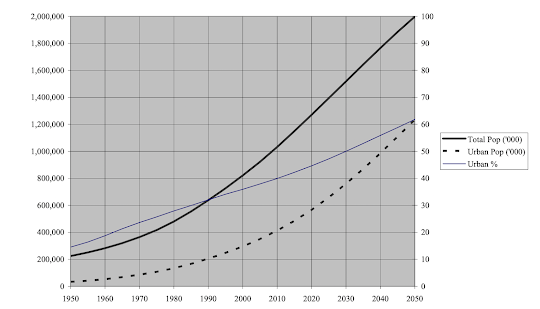Sanergy: a market based approach for improving sanitation in Nairobi, Kenya
In the previous blog post, we outlined some issues with urbanisation for sanitation infrastructures in slum settlements in Africa. This brings us to outlining some solutions that could help improve water and sanitation in Africa. One example which will be discussed in detail will be Sanergy, a market-based approach and will be discussed in the context of Nairobi - the capital city of Kenya. Sanergy addresses the entire sanitation value chain (shown in figure 1) which will be discussed further within this blog post to give you an insight on the advantages (profitability and sustainability) of this method for water and sanitation in Nairobi.
Figure 1
Three graduates from MIT wondered whether they could do more than the governments for water and sanitation so they set off on their journey of improving sanitation in Nairobi.
So what makes Sanergy unique and effective? They use a sanitation value chain, which is both profitable and sustainable for water and sanitation in Nairobi, Kenya. A graphic is shown in figure 2 showing the process of Sanergy’s sanitation value chain. First, we shall discuss the study area.
Study area: Nairobi, Kenya
Currently, the residents in Nairobi have access to public toilets but they are often on the outskirts and therefore useless if individuals cannot access them when required. These public toilets are often free but the following reasons should highlight the issues that occur surrounding these public toilets in Nairobi and in other cities across Africa. Firstly, for women it can be dangerous for them to walk to these toilets, especially at night, in fear of being harassed. Therefore, women are more likely to result in open defecation and other ways of relieving themselves like the ‘flying toilet’ and as a result lead to a higher risk of diseases associated with unsanitary ways of relieving themselves. Also, these facilities are often not equipped with soap or handwashing facilities. Sanergy provides a much better way to avoid or alleviate problems commonly associated with public toilets that are commonly provided by governments. We will discuss the sanitation value chain further in the next few paragraphs to provide an insight into it’s effectiveness for water and sanitation in Nairobi, Kenya.
FIRST step: sanitation facilities
Figure 2: Fresh Life Toilet
Sanergy toilets were named ‘Fresh Life Toilets’ (shown in figure 2) which are easy to maintain and relatively compact in size and therefore can be implemented amongst neighborhoods with homes unlike the public toilets mentioned above. Fresh Life toilets use a pay-per-use scheme for their commercial toilets. For their residential toilets, Sanergy partnered with landlords to offer the Fresh Life Toilets to tenants which were included in their rent but in exchange for tenants keeping the toilet to a good standard.
Sanergy sold these toilets to local people who ran them as businesses. The toilet would cost around $290-$500 and on average take a year to pay back. Sanergy is different from other enterprises because of the support shown through the whole process. Even prior to selling the toilet, Sanergy offers microfinancing options by partnering up with Kiva (a micro-financing organisation). Also, Sanergy supports these entrepreneurs by training them how to properly use the toilets.
SECOND step: Waste transport and removal
Sanergy installed cartridges in their Fresh Life Toilets which would collect waste and Sanergy employees would remove this waste at the end of the day. This waste was transported to processing centers. Prior to Sanergy, the removal of waste from other toilets was difficult in areas with no plumbing.
THIRD step: Waste treatment and reuse
After the transportation of human waste, Sanergy would co-compost the waste with sawdust and microorganisms to remove any pathogens that may be present and as a result created organic fertiliser to be used by local farmers! Fertiliser was sold by the brand Farm Star.
So how has Sanergy stood out from other methods to solve water and sanitation issues in cities like Nairobi?
Sanergy is a market-based approach and therefore often commended for being more efficient and productive than services provided by government agencies. Market-based approaches also provide innovative solutions for end-use of waste products such as fertiliser which generates profits that can recover operating costs. However, the success of market-based approaches relies on the understanding of the study area to deliver accessible and affordable sanitation services. Due to Sanergy's profitable nature, sanitation in Nairobi should be sustainable as profits can be reinvested and cover operation costs to maintain toilets to a high standard. The profits and support offered to business owners of toilets by Sanergy should lead to a larger contribution towards sanitation goal 6.


Comments
Post a Comment